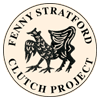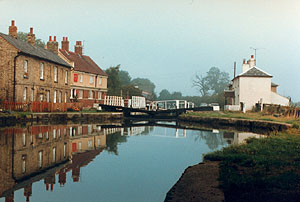 |
|
In 1805 the Grand Junction canal from London to Braunston opened, passing through Fenny Stratford. To overcome a local problem during construction a temporary lock was installed just north of the Watling Street canal bridge and still remains to this day. The canal provided an economical means of moving goods and material. Wharves were established in the area adjacent to the canal, Watling Street and Simpson Road and a number of businesses, including coalyards, brickworks, brewery, gasworks, foundry, timber yard and sawmill variously developed through the nineteenth century. Continue.. |
|



